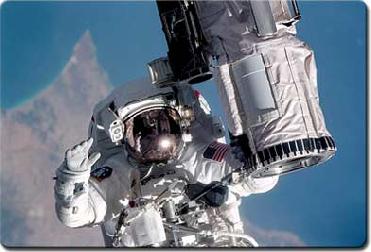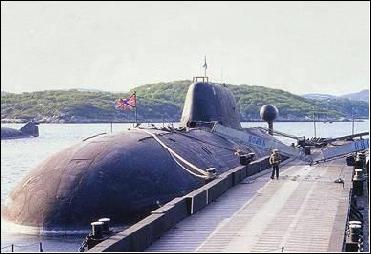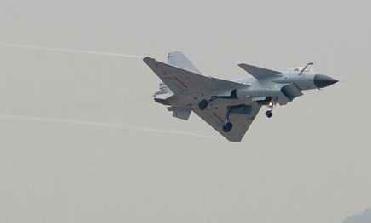
A mission specialist performs a spacewalk
WASHINGTON (BNS): For years, STS-126 has been planned as the mission that will give the International Space Station (ISS) the ability to support twice the crew currently living there. Since the most recent inspection of the station's solar alpha rotary joint, it's also become the mission that will ensure the station can generate the power the extra crew members will require.
Altogether – and with a few other tasks thrown in for good measure – there will be a busy four days of spacewalking outside the station. But that doesn't mean a break for those left inside.
Lead station flight director for the mission Ginger Kerrick said if the outside work doesn't get one excited, the inside work will.
STS-126 Commander Chris Ferguson said that it's the most jam-packed logistics module one has ever carried up to ISS. "We're taking a three-bedroom, one-bathroom house and turning it into a five-bedroom, two-bathroom house with a gym."
NASA said the power generated by the two solar alpha rotary joints (SARJ) will be put to good use next year when the station increases to a crew of six, rather than the current three. STS-126's main purpose is to get the station ready for the expansion, and space shuttle Endeavour was carrying with it a multi-purpose logistics module loaded with about 32,000 pounds of equipment with which to do so.
Scientists said the SARJs are two 10-foot-wide, wagon-wheel-shaped joints on the station's truss that allow the electricity-generating solar arrays to rotate so that they're always getting as much Sun as possible. Last year, flight controllers on the ground noticed that it was taking more power than normal to rotate the SARJ on the station's starboard – or right – side, and it was vibrating more than it should.
Over several spacewalks to inspect the joint, engineers narrowed more than 100 possible causes down to one: insufficient lubrication. Without enough lubrication, the trundle bearing assemblies that hold the two halves of the joint together, and allow one side to rotate while the other stays still, were pressing too hard against one side of the joint. This added pressure damaged the steel of the joint's "wheel," which the bearings roll against, and left metal filings that could cause more damage, NASA said.
During the 15-day mission, spacewalkers Heidemarie Stefanyshyn-Piper, Steve Bowen and Shane Kimbrough will spend the majority of the four spacewalks fixing that. They'll start by cleaning the metal shavings off the surface, then lubricate it and replace the trundle bearing assemblies – all of which is more complicated than you might expect.
Explaining the process, NASA said the astronauts will have to go out and remove the thermal covers that protect the SARJ – no more than four at a time, though, due to thermal concerns – removing the trundle bearing assemblies – no more than two at a time – cleaning the surface, lubricating it, installing new trundle bearing assemblies and reinstalling the thermal covers.
"You might think of putting a crew member out there with a wipe and just rotating the SARJ underneath them, but that of course presents safety hazards," Kerrick said.
Following the first spacewalk, the spacewalkers will go back inside and the SARJ will be rotated so that the newly clean sections are under the two massive drive lock assemblies that cause the SARJ to rotate, leaving the rest of the surface accessible for cleaning on the second and third spacewalks.
Ferguson said that to a certain degree, it's repetitive. "You remove a cover, remove a trundle bearing, clean, lubricate. Replace the trundle bearing, replace the cover. But the thing is you want to make sure you get the technique right. That's what takes the three spacewalks," he said.
NASA scientists said the experience of those three spacewalks should stand them in good stead for the fourth spacewalk of the mission, when they compress the lubrication of the port SARJ into one spacewalk.
The port SARJ hasn't experienced any problems or shown any of the damage the starboard SARJ has. But to be on the safe side, the spacewalkers will go ahead and lubricate its surface to keep the problem from developing in the future. Hopefully this will save the time of having to go and clean it and replace its trundle bearing assemblies later on. "We're working on the starboard SARJ; we're working on the port SARJ. If there's a SARJ up there, we're working on it," Kerrick said.
Meanwhile, NASA said that back inside, the crew – which, in addition to Ferguson, Piper, Bowen and Kimbrough, includes Pilot Eric Boe, Mission Specialist Donald Pettit and the station's next flight engineer, Sandra Magnus – will spend a lot of time unpacking the new crew quarters, a new toilet, a new kitchen, a new refrigerator and new exercise equipment, not to mention the science experiments.
"We're going to use up a lot of the new space that we've brought up on the past few missions, with Node 2 and Columbus and the Kibo module," lead shuttle flight director Mike Sarafin said. "The six-person crew is an important step toward utilizing the space station to its full capability," he added.
But in addition to fully utilising the space station, NASA said the equipment brought up by Shuttle Endeavour will allow the space station to start depending less on the space shuttle. A new regenerative environmental control and life support system will give the station the ability to recycle urine and the condensation that the crew breathes into the air into pure water that can be used for drinking or to cool the station's systems. That will be important when the shuttle fleet is retired in 2010, and its water deliveries dry up.
"Up until this point, the majority of the station's drinking water was coming up from the shuttle or the Russian's Progress vehicle," Sarafin said, adding that this sets up for long-term sustainability of the station without the shuttle."
NASA said nobody would be drinking the water generated by the system just yet – an onboard purity monitor needs to be checked out and multiple water samples must be analysed by scientists on the ground first. "To get that water sample home as quickly as possible, Endeavour's crew will take a shot at getting the system hooked up before they leave. If they're able to do so, it will be no small feat."
In the meantime, Kerrick said the regenerative life support system checkout was also highly choreographed. "The crew has to set up the racks and install some critical hardware. Then the ground has to perform some initial checkouts. After that there are a series of crew and ground steps that must occur in a particular sequence - all leading up to a sample that will be generated around flight day 11. This was not part of our original timeline, but something that has become a very important mission priority so we can be prepared to provide a 'go' for six-person crew operations late next spring."
It would also be a good way to mark the 10th birthday of the International Space Station on November 20 – 10 years after the first station module was launched into space and construction began.
"We'll be transitioning to true utilisation and setting up for six-person crew at that 10-year bench mark," Sarafin said, adding that it's been a tremendous international effort to get to this point, and there was no better way than this to celebrate it.
 Previous Article
Previous Article Next Article
Next Article













The Indian Air Force, in its flight trials evaluation report submitted before the Defence Ministry l..
view articleAn insight into the Medium Multi-Role Combat Aircraft competition...
view articleSky enthusiasts can now spot the International Space Station (ISS) commanded by Indian-American astr..
view article